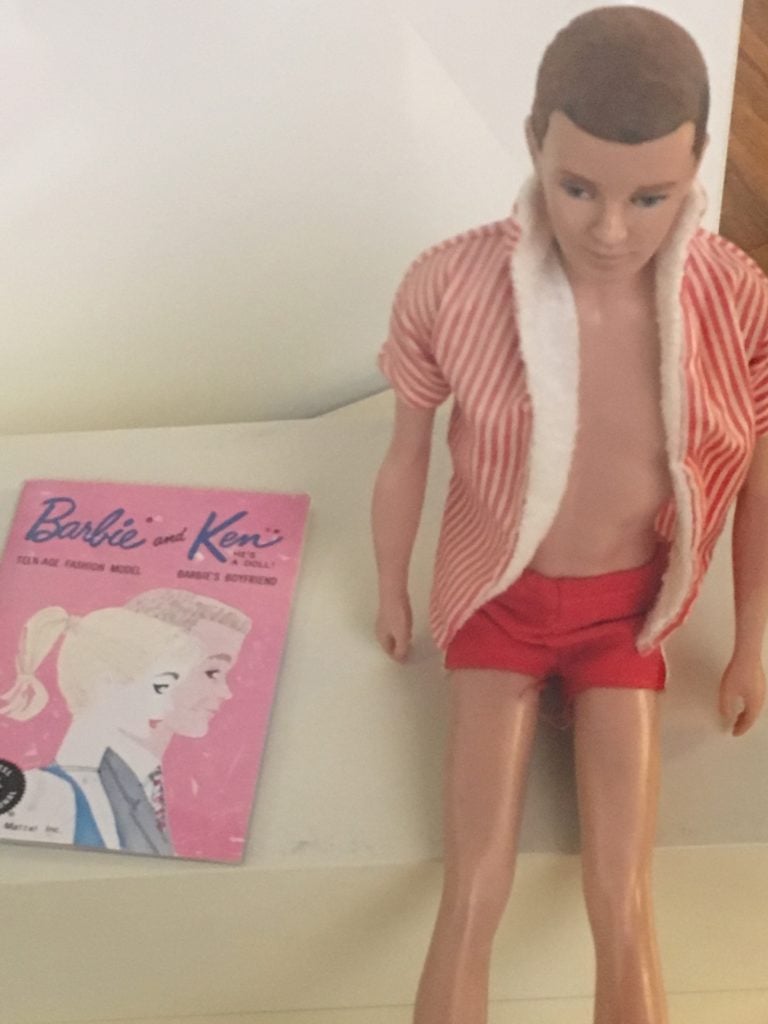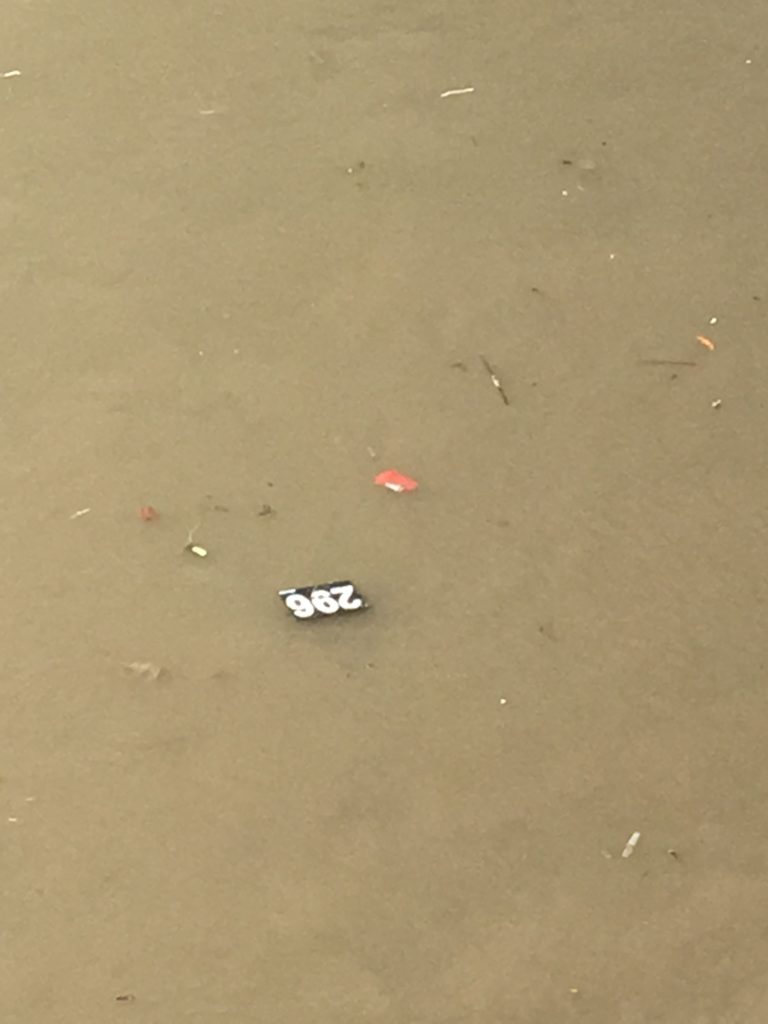Opinion
Kenny Schachter Hunts Big Game Basquiat in Bentonville
Kenny stops in Arkansas to visit Crystal Bridges Museum.

Kenny stops in Arkansas to visit Crystal Bridges Museum.

This is an interim report between the West Bund and Art 021 art fairs in Shanghai next week, followed by the pivotal New York November auctions kicking off on the 14th, and the final Basel iteration before year end in Miami. The 11th Shanghai Biennial, entitled “Why Not Ask Again” (I might have opted for Don’t Ask!) is also underway. By Christmas I won’t be able to stomach another plane or painting.
Also in Shanghai, on the 7th, is the 2016 Inaugural Artnet Awards at the Fosun Foundation which honors Chinese emerging and contemporary artists based upon algorithms compiled by a team of professional art and economic quantitative experts. From one of the organizers, the process is “…a step towards Artificial Intelligence (AI) which may one day achieve machine learning of the information from the contemporary art world, a goal worthy of working on.” You can make an argument that a certain artificial intelligence already holds sway in the art world—in the form of the hollow human variety. Where the role of advisor requires little or no credentials, people in the art world invent themselves and often feign smarts, which is a kind of artificial intelligence.
Just back from another quickie to New York for a studio visit with a European private museum and a stopover in Arkansas to visit the Crystal Bridges Museum of American Art, for the hell of it. Art is a brutally itinerant business requiring the endurance of a performance artist that brings to mind song titles from John Denver’s “Leaving on a Jet Plane” to Willie Nelson’s “On the Road Again.” In a never-ending succession of cities, the more you leave home the less it feels like one.
Circling back to AI, Bill Gates has stated that he is profoundly troubled by the possibility that it could grow beyond control—and I bet he hasn’t heard of the art world applications yet which sound more menacing. As far as the future of our business, what’s next? We have the ubiquity of freeports (Nassau in the Bahamas is like a freeport for people) that have been under increased scrutiny since storage facility owner Yves Bouvier was sued by Dmitry Rybolovlev for charging usurious fees in art transactions (not to mention the ruthlessly excessive sums charged by all storage companies) a conflict of interest Larry G. bemoaned.
Taking it a step further, with certain blue chip art continuing the dizzying ascent of the recent past, there might be a day when masterpieces are too valuable to see (prohibitive insurance costs, security, etc.). I can envision an electronic trading system with no physical possession of art that would stay in a centralized, neutral, universally tax free repository under international auspices. You’d buy and sell art unhindered by costs of transport or possession. Either that or the business will be commodified to such an extent there will be Walmart art storage.
Which brings me to the next topic at hand, the Crystal Bridges Museum of American Art founded by Alice Walton which launched in 2011 in Bentonville, designed by Moshe Safdie. Arkansas is known for such culinary delights as possum pie, chocolate gravy, and fried pickles. Since the launch of the museum, Basquiat and his ilk have replaced boars and elk for big game hunting.
Arkansas is Trump red for Republicans despite being home to the Clinton Presidential Center, yet everyone I asked in town said Hillary when I conducted my informal poll. You get the impression no one will admit it, but I fear in the voting stall (another kind of booth commentary) many will furtively look over their shoulders then cast a vote for Mr. T.

Sam Walton’s office at the Walton Museum in Bentonville Arkansas. Courtesy of Kenny Schachter.
Walmart, founded in 1962 by Sam Walton (1918-1992), Alice’s dad, came to operate multinational hypermarkets, discount department stores, grocery stores (and a museum) and in less than 55 years, the family-owned business became, according to Forbes, the world’s largest company by revenue (nearly $500 billion) and the largest employer (2.2 million).
Walton was said to be humble, unpretentious and of simple tastes scooting around in a red and white 1979 F150 Custom Model Ford half-ton pickup truck with a four-speed manual transmission and four-wheel drive. Pretty cool. With a gun in the back as you would expect. I wonder what he’d make of the surfeit of soaring curved beams of Arkansas pine that appear like the ribcage of an oversized wooly mammoth that define the architecture of Crystal Bridges.
If you are from the Ozarks, the highland region of the central United States, primarily in Arkansas, Missouri and Oklahoma, the museum is straightforwardly accessible and exceptionally egalitarian in mission. There is even Bentonville Uber, which makes it a little easier to understand the pornographic valuation of the taxi company that at around $60 billion equals the yearly gross of the art market. As I was being driven from the airport, I found it even more endearing that the driver careened into potholes while running red lights attempting to program his Sat Nav, in a town the size of my laptop. Uber rocks.
A short time ago, I met Rod Bigelow, executive director & chief diversity and inclusion officer of Crystal Bridges (does that refer to the art, audience, or both?) at a lunch in London and on a lark decided to pay a visit. When I showed up for my meeting I was met by the press officer (media kit at the ready) and the enthusiastic Chad Alligood—sounds like the ever optimistic Dr. Pangloss in Voltaire’s Candide—a Harvard grad who hails from Georgia and last curated at the Cranbrook Art Museum located in the Detroit suburbs. So he came geographically prepared. He spoke of the museum’s ethos of reaching out to the art buff and amateur in the same breath with similar ardor: an estimable outlook after my own heart.
With all due respect, I was slightly taken aback by the lack of Southern hospitality: I wasn’t even offered a water after the arduous trip or, for that matter, an Arkansas Razorback (the names of college sports teams at the University of Arkansas in Fayetteville, also known as the Hogs) consisting of half shots of rum, vodka, amaretto, and Kahlua.
The collection as it stands today is slightly baffling; if you’re an aficionado of the Hudson River School (the initial impetus behind Alice’s collection) the perspicacity is astonishing; I’m not sure it’s worth the pilgrimage alone, though maybe that will change.
The postwar and contemporary collection hints at acquisition by committee in the face of the coherence of the rest, resembling the in-house, quarterly auction publications trumpeting their latest conquests.

Ken from the Walton Museum. Courtesy of Kenny Schachter.
Some of the more historical paintings that form the core of the collection were acquired through contentious deacquisitions from a series of universities across the country, though not always successful in their attempts. There are brilliant John Singer Sargents and James Abbott McNeill Whistlers that appear as though painted yesterday (by the bushel), and boundless curiosities like George Tooker and Paul Cadmus and other unexpected appositions.
There is an impressive (late) Donald Judd stack in red and copper, a lushly painted Wayne Thiebaud, Supine Woman from 1963, said to depict his daughter and a kind of random monochromatic Brice Marden shoehorned in a tight space that elicited predictable sneers from the passing audience during my visit (as did the Dan Flavin fluorescent fixture).
Recent auction purchases include works by Andy Warhol, Jean-Michel Basquiat, Jasper Johns, Georgia O’Keeffe, the Judd and many, many others, often acquired at exorbitant, record-setting levels.
There is a privately acquired 1960 Mark Rothko painting, No. 210/No. 211 (Orange) that had to be relocated due to fact it had the unintended effect of repelling visitors—unaccustomed to the finality of Rothko’s stern, somber blocks of color—like a cement blockade.
A better story is the 1996 Andrew Wyeth painting entitled Airborne. The Wyeth, depicting a barn on a roughhewn shoreline littered with fluttering feathers, was painted with unstable pigments to the extent the work had to be repeatedly restored in the artist’s lifetime upon which occasions he would undertake to add another feather after each restorative intervention. Like a living organism, to this day, the painting must be repeatedly administered to, though the cleaning has been proven to have no long-term impact on the conservation of the work.

Have you seen my auction paddle? The Thames in Battersea, London. Courtesy of Kenny Schachter.
There is the recent purchase and installation of the small Frank Lloyd Wright Bachman-Wilson House from New Jersey (1954-6) (the asking price was $1.5 million) in the vein of his economical middle-income vision for a utopia he referred to as Usonian—I wonder what he too would think of the new home of his wearing its hanging heart of mirror-polished stainless steel with a transparent color coating and yellow brass by Jeff Koons on its sleeve. Reductive and economical in space and form, either people were much slimmer back then or Wright had a thing against overweight folks.
Finishing up the whirlwind trip I hit the actual Walmart museum, a lighter, tighter take on the provider of money for the masses, Sam Walton, with his rather Usonian office replicated with the attention to detail that Francis Bacon’s studio was painstakingly reconstructed in Dublin.
There is also Walton’s truck and rifle, and a nifty Ken doll from the 1950s. As a postscript, last I remember Rudolf Stingel, represented by a self-portrait recently purchased at auction, wasn’t American. Too bad there aren’t more like Alice Walton to buoy the market and expose art even further. I certainly appreciate the efforts and commitment.
I am slightly nervous win or lose, of the post Trump troupes mobilizing into pockets of resistance like in every major European city nowadays, disenfranchised hooligans the lot (largely anarchistic socialists where I come from), that are pissed and ready to provoke. In a sense, auctions reflect another kind of ruthlessness necessitated to prosper in the art market that practically offsets the capacity to appreciate it, they come from such opposite brain lobes. In art, unlike a casino, the house doesn’t always win nor for that matter do the galleries, many anyway, are closer to the dupes than the card dealers.
Walking along the Thames, as filthy as the US elections, I recently saw what I mistook as an auction paddle floating along the river. It struck me as an apocalyptic omen of a possible time when it’s not fashionable, glamorous or particularly wise to wield a paddle. Can you envision an art market up a creek with no paddle? Nah, me neither.
In the midst of this piece, my computer crashed and, in a state of panic, I entered the Apple shop on 59th Street in New York, which is open 24/7, 365 days a year, imagine if there was an appetite for art like that? I wish. Unlike any retail experience, the world over—the Apple employees called “Geniuses” like the “Cast Members” that work at Disneyland—pacified me, put me at ease, and saved my file to boot. Sam Walton would be especially proud; we could all learn from his humility.